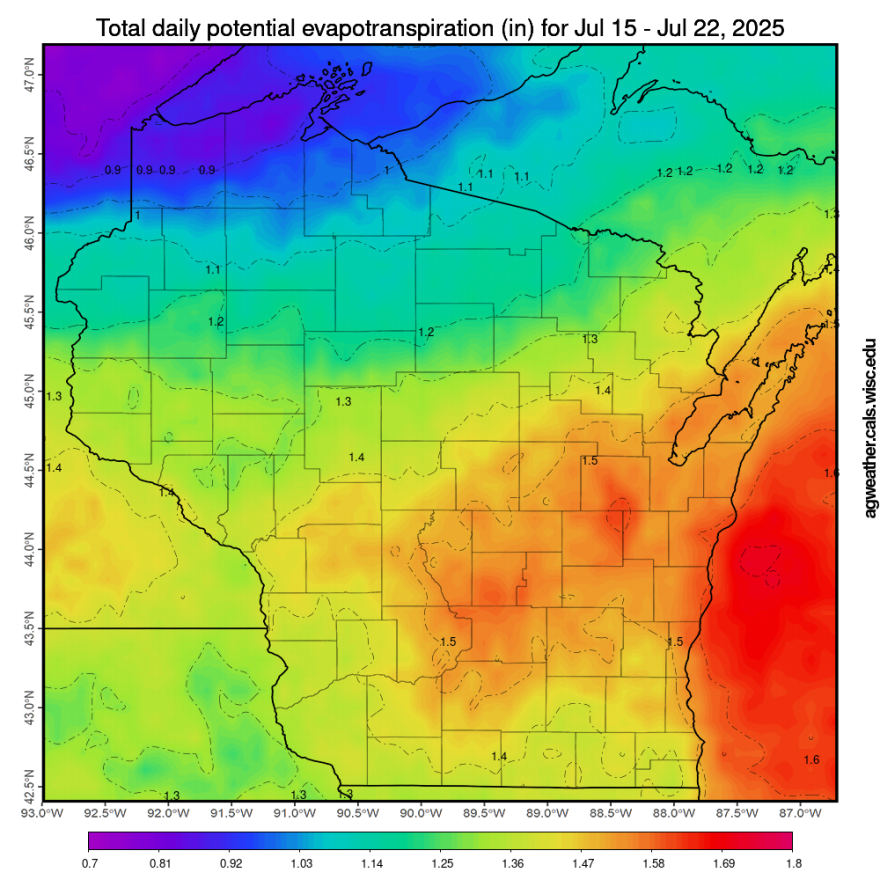Right now, crops like corn are reaching their peak vegetative phase, referred to as tasseling. It’s when they want to take in a lot of water.
The crops pull up water from the ground through the roots and stores it in the plant.
Then as the corn photosynthesizes it needs to open up pores so it can take in CO2.
“There's a higher concentration of water in the leaves compared to the outside atmosphere. So as when they open those pores, some of that water comes out, and that's a process called transpiration, which is sometimes referred to, like you said, as corn sweat,” said Josh Bendorf, Climate Outreach Specialist for the Wisconsin State Climatology Office.
It’s a process all plants go through and one that Bendorf says is only part of the equation.
On warm, sunny, breezy days, water from plants, soil, and bodies of water can all evaporate into the air.
“We call this evapotranspiration, which is a combination of evaporation and transpiration, so that's like the land's contribution to humidity this time of year,” said Bendorf.
Wisconsin has about 3.5 million acres of corn and 2 million acres of soybeans that can contribute to the humidity this time of year.

Bendorf says estimates from Iowa have shown corn sweat can add several degrees to the dew point temperature.
Which on its own might not be much, but when it’s added to the warm, moist air coming up from the south this time of year it can be the difference between uncomfortable and miserable.
“We could have a humid day here, without the corn sweat and the other plants transpiring. But, you know, it might bump up the dew points from being upper 60s to being low 70s. That's kind of the scale that we're talking about here,” said Bendorf.
Dew points in the Rhinelander area were in the low 70s yesterday. They’re forecasted to stay in the high 60s much of the day Thursday before starting to drop to more comfortable levels.

While humans might not like the humidity, Bendorf says it can be beneficial for crops.
“The corn and soybeans, they like it hotter and humid as long as there's enough moisture,” said Bendorf. “We've had good rains, good moisture this growing season so far. But that can become a problem on a day like this, if it was going to be hot, we can lose over an inch of water during a warm week in summer, this time of year, through evapotranspiration.”
Bendorf says its also important to note that evapotranspiration is a “notoriously difficult” variable to measure.







